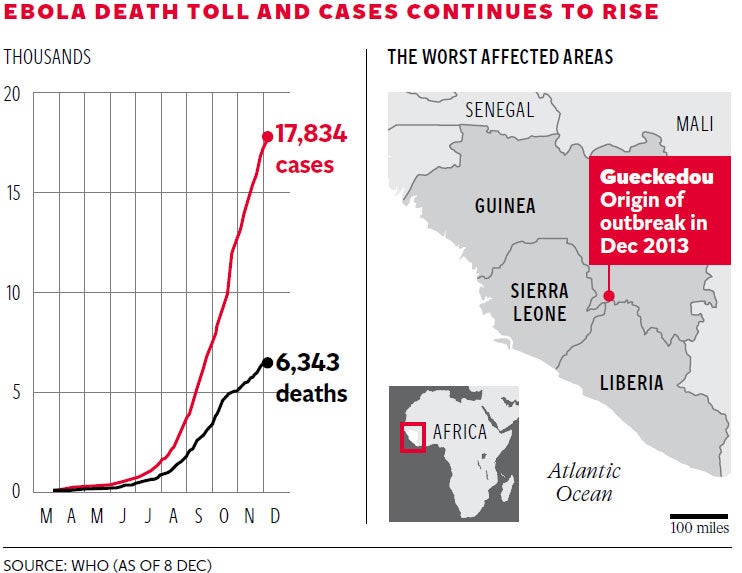Ebola virus tricks the body and strips victims of dignity
As soon as the virus enters the body it infects the cells which are supposed to send signals to the immune system

Your support helps us to tell the story
From reproductive rights to climate change to Big Tech, The Independent is on the ground when the story is developing. Whether it's investigating the financials of Elon Musk's pro-Trump PAC or producing our latest documentary, 'The A Word', which shines a light on the American women fighting for reproductive rights, we know how important it is to parse out the facts from the messaging.
At such a critical moment in US history, we need reporters on the ground. Your donation allows us to keep sending journalists to speak to both sides of the story.
The Independent is trusted by Americans across the entire political spectrum. And unlike many other quality news outlets, we choose not to lock Americans out of our reporting and analysis with paywalls. We believe quality journalism should be available to everyone, paid for by those who can afford it.
Your support makes all the difference.The Ebola virus plays two devastating tricks on the human body. It first disarms the immune defences which are meant to protect against an invading virus. It then dismantles the vascular system, causing internal bleeding and death from the shock of low blood pressure and multiple organ failure.
The virus belongs to a group called the filoviruses because they look like filaments under a powerful microscope, and the species causing the current epidemic in West Africa is called Zaire ebolavirus, which is readily transmitted by direct contact with body fluids.
As soon as the virus enters the body through broken skin or mucous membranes – such as they eyes or nose – it infects the dendritic cells of the body, which are supposed to send signals for the “killer” cells of the immune system to attack and destroy the alien Ebola.
With these signals blocked, however, the Ebola virus is free to replicate and attack other cells of the body. It rapidly does this, causing immense damage to the lining of the blood vessels, causing them to leak. This leads to internal bleeding and, in some patients, bleeding from the eyes, nose, mouth and other orifices.
Once a person shows the first symptoms of Ebola, such as fever, muscle pain, headaches and sore throats, they are themselves infectious. They will remain infectious even after death, which is why corpses have to be handled and buried with extreme care.
The mortality rate from Ebola in confirmed cases is very high, above 70 per cent if there is no proper health care, and possibly below 60 per cent if there is. However, other than rehydration therapy, there are no effective drugs or vaccines, although two are currently undergoing early trials.
So far in the current epidemic there have been nearly 18,000 reports of Ebola virus disease, and almost 6,400 deaths, affecting three main countries. According to the WHO the incidence is slightly increasing in Guinea, decreasing in Liberia (which has seen the greatest number of deaths at 3,177), and probably stable or slightly increasing in Sierra Leone. The current epidemic is bigger than all previous Ebola epidemics put together in terms of reported cases and deaths. It has also affected a far bigger geographical area than earlier outbreaks.
Fruit bats are probably the natural “reservoir” of Ebola virus, but it also infects other wild animals such as chimpanzees, monkeys and forest antelopes. Humans are thought to become infected first by direct contact with infected bush meat or animals.
Once someone has contracted the virus, they pose a serious risk to their family, friends and health workers attending them. Traditional funeral rites, where bodies are washed before burial, can also spread the virus to mourners.
The WHO recommends that Ebola patients are cared for at specialised health facilities and not at home. The dead have to be buried in sealed body bags to prevent the escape of infectious fluids – the final indignity caused by this virus.
Join our commenting forum
Join thought-provoking conversations, follow other Independent readers and see their replies
Comments